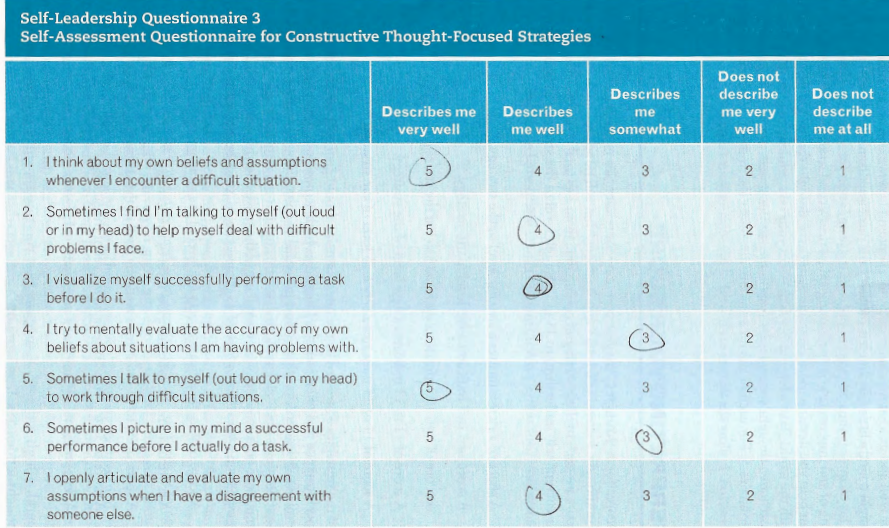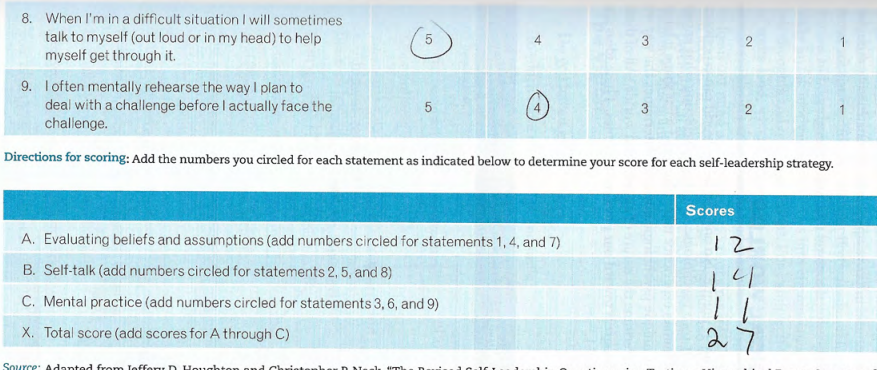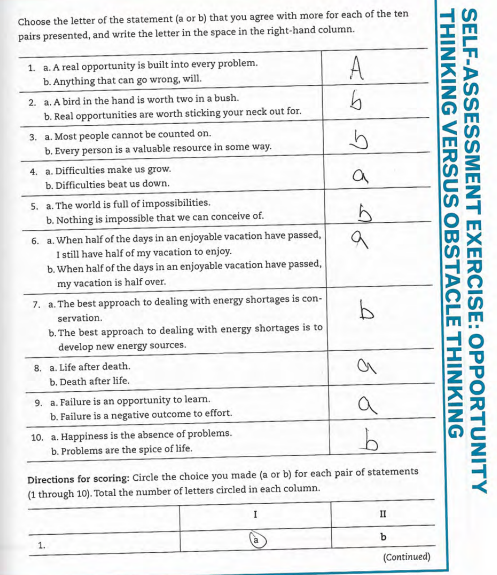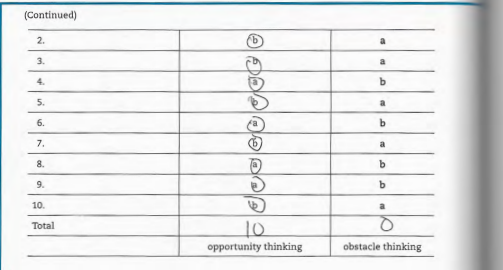A constructive thought-focused strategy is a fundamental tool that promotes self-transformation. In the past years, I have doubted myself and every decision I make. The process has become a pattern and currently formed a significant barrier hindering my growth and progress in areas I believe effort and dedication are necessary to obtain the maximum outcome. I have developed several beliefs and personal assumptions as well that to some extent have contributed to my inability to overcome difficult moments (Neck, Manz, & Houghton, 2017). In most cases, when am cornered with a challenging situation, I revisit the beliefs and assumptions I have about the situation. After the condition has proven an issue and it is necessary I have to manage it, I do talk loud to myself in my head. I have been good at having such personal conversations and in the end, I find a reason to concentrate and complete the task.
In addition, I tend to visualize how perfectly I will perform a task before I begin. The approach is common especially when I have a scheduled task that has a couple of hours to be done. This thought strategy gives me a road map of what I should deliver upon completing the work. Whenever I disagree with a colleague, I find it challenging to articulate and evaluate the assumptions I had during the conversation that led to misunderstanding. This aspect requires adjustment to enable accommodate the perception of other people irrespective of their beliefs. Regarding the limitation stated above, I will engage in examining the assumptions I hold about the topic of discussion. This will enhance understanding and accepting other people’s opinions thus preventing differences. Once I adjust myself, colleagues will realize that I no longer refute their point of view as I used to do before.
Moreover, I will analyze and determine various kinds of tasks I feel free and enjoy performing. This is achievable by being aware of what is contained in every activity am supposed to undertake. To remain focused, I pay attention to work enjoyment which gives me the ability to do my best, instead of focusing on the rewards associated with performing the task. Furthermore, to keep myself motivated, I concentrate my thoughts on what I prefer about the duty than issues I do not value. This approach enables me to eliminate possible distractors that are more likely to prevent my attentiveness. The criteria are useful in enhancing participation and improving the outcome. From the assessment in figure 1 below, I have a score of 27 points on constructive thought strategies.


My Current Thinking Pattern as It Relates to Self-Leadership
A real opportunity is built into every problem
I believe in every opportunity there is a problem and vice versa. Personally, it is necessary to assess issues that might be present that have the likelihood of hindering progress. Upon identifying the obstacle, a proper solution is determined that will turn the challenge into another opportunity for growth. By applying the aspect of creativity, it becomes easier to formulate an effective approach that harnesses the existing situation into a valuable resource (Batool, 2013). Based on my perspective, an individual should not ignore pending problems but instead explore them to develop the desired solution.
Real opportunities are worth sticking your neck out for
Fear of taking risks is a disgrace to the success of an individual. It is essential for each person to do what is necessary as long as it is promising in the end. I believe seeking opportunities is far much better than trying to hold on to the little a person has gathered. Despite the prominent obstacle associated with the visible chances, taking one step at a time presents a high possibility of succeeding. Even though sometimes there is no guarantee, the trial gives a useful lesson that can be applied next phase when searching for opportunities.
Each person is unique and resourceful
I believe any person has his or her unique talent that once identified can be exploited to the fullest. When given a task, I prefer engaging other personnel to contribute their ideas. Having varied viewpoints, it is easier to identify an opportunity. Therefore, I assume when many people are able and willing to participate and corporate effectively, the overall output must be improved. This implies that each person is a resource and it is upon the leader to identify areas that should be improved to make them better and more reliable.
Based on my current thinking pattern, I have been able to have a different perception of reality. It is an improvement in how I used to view situations. To have a wider viewpoint, I should change undermining some critical aspects that require proper examination, especially in decision-making. Concerning the research, effective leaders embrace opportunity thinking and give no attention to thoughts that are an obstacle to progress. By applying the opportunity thinking approach, I perceive failure as an essential learning ground where I perfect my abilities to tackle the same situation in the future. From the assessment, I scored 10 on opportunity thinking and 0 on the obstacle as shown in figure 2 below.


The process of mental practice is an essential aspect that complements the thinking strategy. However, several dysfunctional thinking plans affect the effectiveness of peoples’ thoughts. The key focus that requires improvement is the facet of jumping to a conclusion. This approach narrows the scope of thinking thus preventing the mind from exploring possibilities that are worth exploration. In addition, I can improve my thinking further by working on emotional reasoning. When feelings are involved, the likelihood of becoming irrational is high leading to serious obstacles.
Situational Leadership
Situational leadership is a type of management that is flexible and able to transform according to the current needs of the team. The administration style easily adapts and aligns with organizational goals (Elder, 2022). Situational headship does not require managers to have some specific skills and competencies to manage people effectively. To be an impactful leader, it is essential to master and practice situational leadership because it enables managers to change the overall thinking of followers based on the current status. Furthermore, the front runner can easily lead in any circumstance because the approach allows them to adapt to any condition.
Applying situation leadership enables leaders to detect opportunities and implement relevant approaches to gain from them. On the other hand, the style makes it easier to detect possible obstacles such as laxity in the workplace that prevent workers from giving their best (“The 15 genuine benefits of Situational Leadership in 2022”, 2022). When leading such individuals, it is easier to formulate other techniques to change their behavior. In addition, to be a leader, one should be able to perceive the potential in each person. Opportunity thinking allows the manager to examine areas that can be improved to make the group effective.
Building My Brand as a Self-Leader
To become an effective self-leader, I will utilize the concept of constructive though-focused approaches to align my thinking to the desired level. In addition, I will rely on opportunity thinking to increase my ability to perceive the best of any situation. By combing the two techniques, I will advance my competencies which are useful traits for managing oneself. Furthermore, I will focus on emotional intelligence to enhance my understanding of how feelings impact rationality (Batool, 2013). By comprehending the aspect of reactions, I will be able to remain calm and analytic to explore possible facets am dealing with.
References
Batool, B. F. (2013). Emotional intelligence and effective leadership. Journal of business studies quarterly, 4(3), 84.
Elder, D. (2022). Council post: Becoming a situational leader. Forbes. Web.
Neck, C. P., Manz, C. C., & Houghton, J. D. (2019). Self-leadership: The definitive guide to personal excellence. Sage Publications.
The 15 genuine benefits of Situational Leadership in 2022. IMD business school for management and leadership courses. (2022). Web.